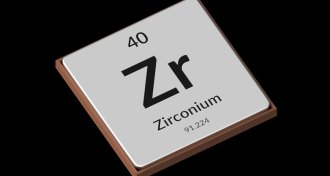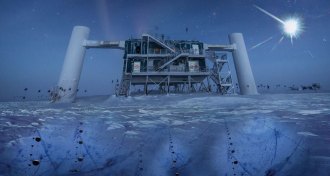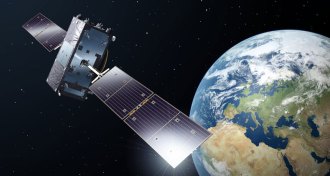
Senior physics writer Emily Conover joined Science News in 2016. She has a Ph.D. in physics from the University of Chicago, where she studied the weird ways of neutrinos, tiny elementary particles that can zip straight through the Earth. She got her first taste of science writing as a AAAS Mass Media Fellow for the Milwaukee Journal Sentinel. She has previously written for Science Magazine and the American Physical Society. She is a two-time winner of the D.C. Science Writers’ Association Newsbrief award, and a winner of the Acoustical Society of America’s Science Communication Award.

Trustworthy journalism comes at a price.
Scientists and journalists share a core belief in questioning, observing and verifying to reach the truth. Science News reports on crucial research and discovery across science disciplines. We need your financial support to make it happen – every contribution makes a difference.
All Stories by Emily Conover
-
 Astronomy
AstronomyUltima Thule is shaped like two lumpy pancakes
Scientists are rethinking the shape of the space rock, once thought to be a snowman.
-
 Physics
PhysicsLaser light can contain intricate, beautiful fractals
Fractals show up in cauliflower, seashells and now — lasers.
-
 Physics
PhysicsLasers could send messages right to a listener’s ear
Communication in noisy environments or dangerous situations could one day rely on lasers.
-
 Physics
PhysicsPhysicists aim to outdo the LHC with this wish list of particle colliders
Proposed new accelerators could solve mysteries of the Higgs boson.
-
 Physics
PhysicsA new gravitational wave detector is almost ready to join the search
Buried deep underground, Japan’s KAGRA detector relies on components cooled to just 20 degrees above absolute zero.
-
 Physics
PhysicsA weird type of zirconium soaks up neutrons like a sponge
Zirconium-88 captures neutrons with extreme efficiency, and scientists don’t yet know why.
-
 Physics
PhysicsHigh-speed video reveals physics tricks for shooting a rubber band
To fire a rubber band flawlessly, use a wide band and don’t pull too hard, physicists suggest.
-
 Physics
PhysicsThe physics of fluids explains how crowds of marathon runners move
A new liquid-inspired theory can predict the movements of marathoners lining up for a race.
-
 Particle Physics
Particle PhysicsNeutrino discovery launched a new type of astronomy
Particles associated with a blazar kick-start the field of neutrino astronomy.
-
 Physics
PhysicsA satellite screw-up reaffirms Einstein’s theory of gravity
Two spacecraft confirm that time passes more slowly closer to Earth’s surface.
-
 Particle Physics
Particle PhysicsA controversial sighting of dark matter is looking even shakier
Two dark matter experiments disagree despite using the same type of detector material.
-
 Physics
PhysicsScientists’ collection of gravitational waves just got a lot bigger
The biggest black hole merger yet seen created one set of the spacetime ripples.